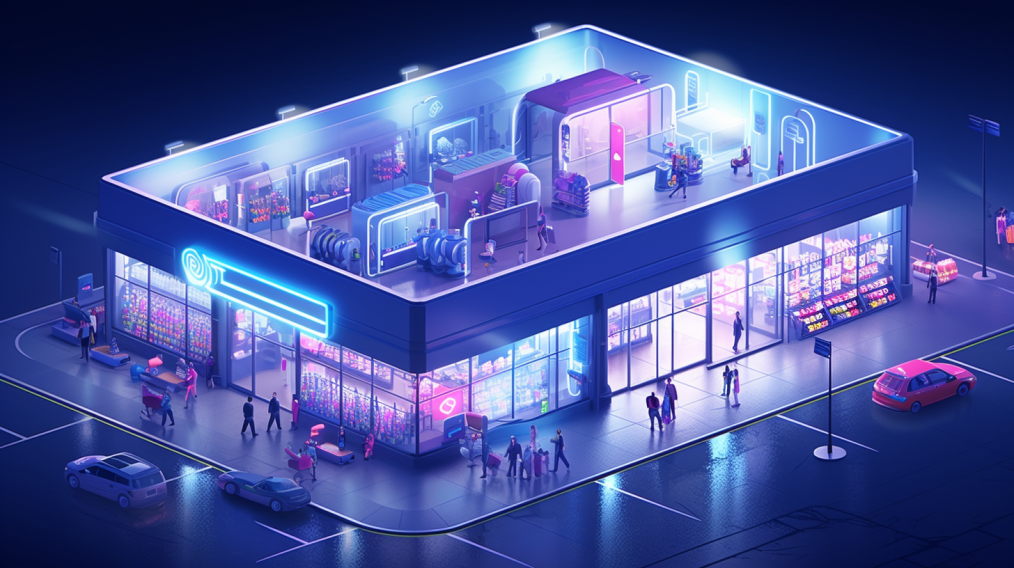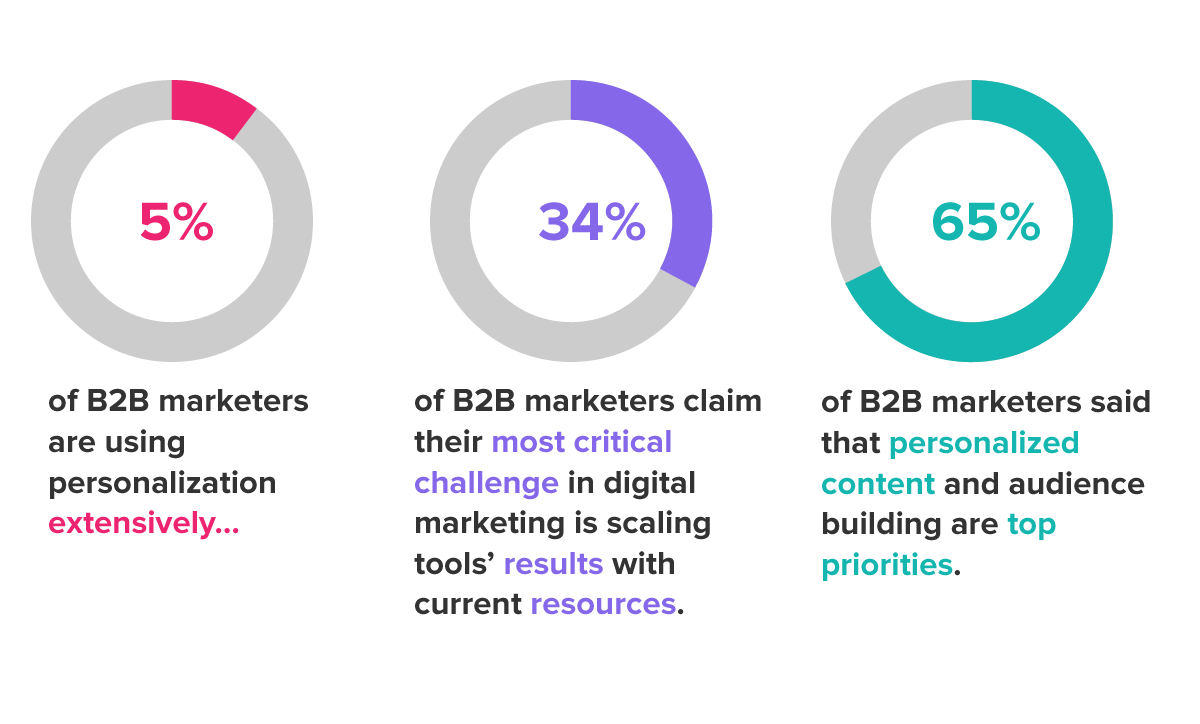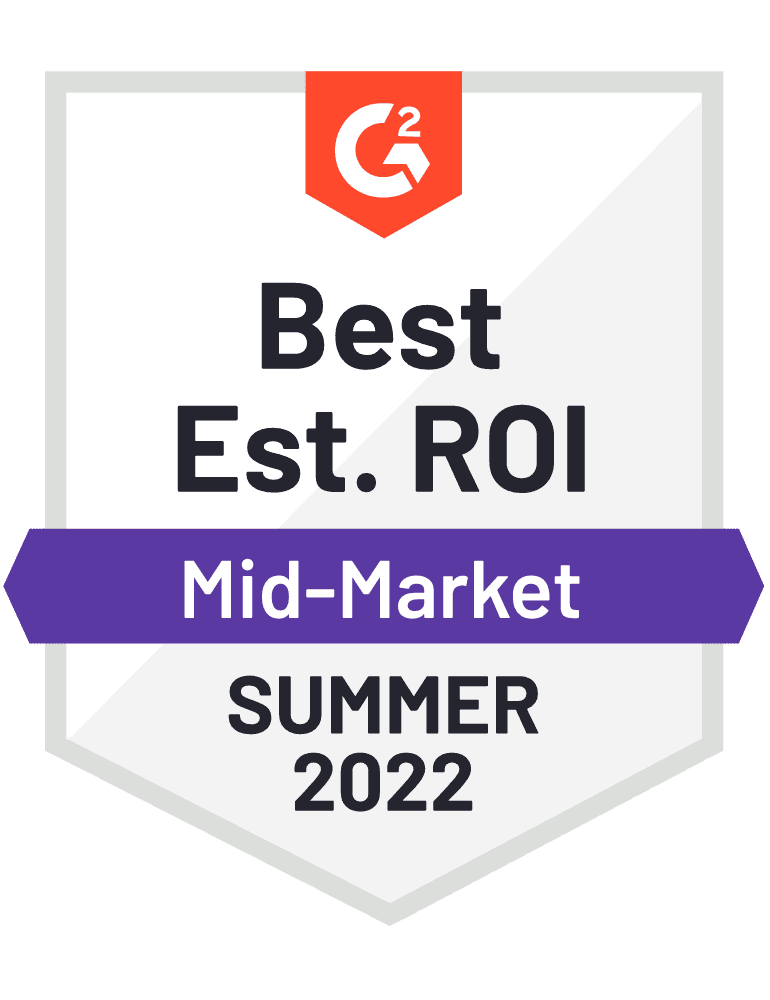B2B vs. B2C Personalization: The Hidden Differences

Personalization is no longer optional—it’s a must for both B2B and B2C companies.
But here’s the thing: while both sectors rely on personalization to engage customers, their approaches are worlds apart.
In B2B marketing, personalization revolves around long-term relationships and tailoring content for specific decision-makers. Meanwhile, in B2C marketing, it’s all about creating instant gratification for individuals.Understanding these differences in B2B vs. B2C personalization is crucial for driving conversions and maximizing marketing impact. And that’s exactly what we’ll dive into here.
Targeted Audience in B2B vs. B2C
When it comes to targeting in B2B and B2C, the approach is completely different.
In B2B marketing, companies focus on specific roles within organizations, such as decision-makers or industry leaders. This means B2B segmentation often revolves around job titles, industry types, or company size.
On the other hand, B2C marketing targets individuals based on demographics, preferences, and behavior. Here, segmentation is more about understanding the personal needs and desires of consumers.In both cases, effective targeting comes down to analyzing behavioral insights to connect with the right audience.
Customer Journeys and Relationships
In B2B, the customer journey is typically a long-term, multi-step process. It often involves multiple stages of engagement and interaction across different decision-makers within a company.
Building trust and fostering loyalty through consistent communication is key to maintaining these relationships over time.In contrast, B2C customer journeys are more direct and usually focused on delivering immediate value.
Consumers expect quick and seamless experiences, making the journey shorter but requiring high levels of personalization to drive loyalty and repeat purchases.

Personalization Strategies for B2B and B2C Businesses
When it comes to personalization strategies, B2B and B2C companies approach them differently.
In B2B personalization, strategies are focused on creating customized journeys for decision-makers across different channels. These journeys are typically longer, and personalization is used to nurture relationships by catering to the specific needs and preferences of each business.
On the other hand, B2C personalization is more immediate and direct.
E-commerce as an industry is increasing at an unprecedented rate. In 2014, e-commerce sales reached $1.3 billion globally. By 2018, that figure more than doubled, reaching $2.9 billion.
Even the most conservative estimates predict that by 2023, global e-commerce sales will total over $6.5 billion. These figures show that e-commerce is here to stay, and the instant question in B2B industries is – how can we leverage personalized journeys to boost our Sales pipeline as well as the B2C industry has done?
Sales Cycles and Purchasing Decisions
In B2B, the sales cycle is much longer, often involving multiple stages of approval and relationship-building with key decision-makers. This process is driven by the complexity of the B2B product strategy, which requires thoughtful, data-backed purchasing decisions.
On the other hand, B2C sales cycles are typically much shorter and more impulsive, with consumers making quick decisions based on immediate needs or desires. The goal is rapid conversion, often driven by the emotional appeal of the B2C product.
Landing Pages and Conversion Optimization
When it comes to landing pages, both B2B and B2C need a tailored approach to boost conversion. In B2B, landing pages are more informational, offering detailed content to engage multiple decision-makers. The focus is on building trust and creating long-term value through personalized, multi-channel engagement.
In B2C, landing pages are optimized for immediate conversion. They use personalization to capture attention quickly, appealing to emotions and encouraging fast purchasing decisions through simple, engaging calls to action.
Metrics and ROI
In B2B, measuring ROI focuses on long-term value. Metrics like customer lifetime value (CLV) and multi-touch attribution are crucial for understanding how each interaction influences the final decision.
The goal is to optimize the entire sales process based on actionable insights from multiple touchpoints.In B2C, ROI is measured through faster, conversion-based metrics.
B2C companies focus on immediate behavior—like click-through rates and purchase completions—aiming for quick, tangible returns based on consumer actions during the buying process.
Evolving Personalization for B2B and B2C
As personalization continues to evolve, B2B and B2C businesses are looking toward emerging technologies like AI and machine learning to drive deeper customization. These innovations will allow companies to better understand customer needs and deliver more relevant, tailored experiences.
In B2B, AI can help refine complex, multi-touch journeys, while B2C companies can leverage it for real-time interactions. The future of personalization will focus on blending data-driven insights with evolving customer expectations to shape personalized experiences that align with future trends.
